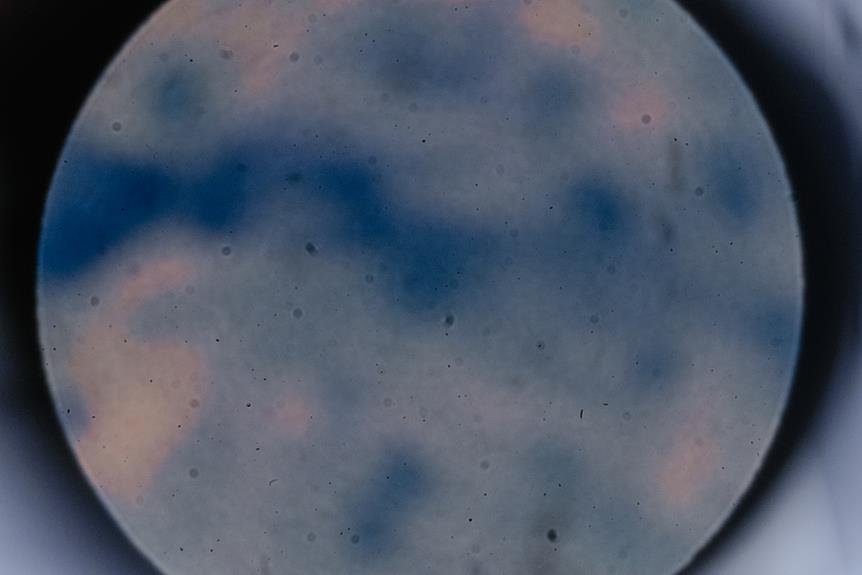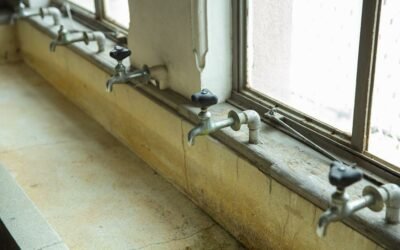Are you tired of breathing in polluted air? An air purifier and sanitizer can help you improve the quality of the air you breathe. With their advanced technology, these devices actively eliminate harmful particles and odors, creating a healthier environment for you and your loved ones.
In this article, we will guide you through the benefits of air purifiers and sanitizers, help you choose the right one for your needs, and provide maintenance tips to ensure optimal performance.
Key Takeaways
- Air purifiers and sanitizers improve air quality by removing airborne pollutants and reducing odors.
- They also prevent the spread of germs and viruses, particularly important for vulnerable individuals.
- Air purifiers can improve sleep quality by reducing respiratory issues and allergens in the bedroom.
- They can also extend the lifespan of HVAC systems by reducing workload and energy consumption.
Benefits of Air Purifiers and Sanitizers
There are five key benefits of using air purifiers and sanitizers in your home.
Firstly, these devices improve the air quality by removing airborne pollutants such as dust, pollen, pet dander, and smoke particles. Studies have shown that poor indoor air quality can result in various health issues like allergies, asthma, and respiratory infections. By eliminating these harmful particles, air purifiers and sanitizers help to create a cleaner and healthier living environment.
Secondly, air purifiers and sanitizers are effective in reducing odors. They can eliminate unpleasant smells caused by cooking, pets, or even mold and mildew. Instead of masking the odors with fragrances, these devices work by neutralizing the odor-causing molecules, providing a fresh and odor-free atmosphere.
Thirdly, air purifiers and sanitizers can help to prevent the spread of germs and viruses. Many models are equipped with advanced filtration systems that can capture and destroy bacteria and viruses, including airborne pathogens like the flu virus. This is especially crucial in households with young children, elderly individuals, or individuals with weakened immune systems.
Fourthly, these devices can improve sleep quality. Air purifiers and sanitizers reduce airborne irritants that can cause respiratory issues and disrupt sleep patterns. By creating a clean and allergen-free bedroom environment, these devices promote better sleep, leading to improved overall health and well-being.
Lastly, air purifiers and sanitizers can extend the lifespan of your HVAC system. By removing particles that can clog the filters and hinder the system's efficiency, these devices reduce the workload on your HVAC system, resulting in energy savings and lower maintenance costs.
Choosing the Right Air Purifier for Your Needs
To choose the right air purifier for your needs, consider your specific requirements and preferences. Here are some factors to consider:
- Room size: Determine the square footage of the room where you plan to use the air purifier. This will help you select the appropriate size and capacity.
- Filtration system: Look for an air purifier with a high-efficiency particulate air (HEPA) filter. HEPA filters are designed to remove 99.97% of airborne particles, including dust, pollen, pet dander, and mold spores.
- CADR rating: Check the Clean Air Delivery Rate (CADR) of the air purifier. The CADR measures how quickly the device can clean the air in a specific room size. Higher CADR ratings indicate more efficient performance.
- Noise level: Consider the noise level of the air purifier. Some models produce loud noises, which can be disruptive, especially if you plan to use it in a bedroom or office.
- Additional features: Determine if you require any additional features, such as a timer, remote control, or air quality sensor. These features can enhance your user experience and convenience.
Understanding How Air Purifiers and Sanitizers Work
Now let's dive into how air purifiers and sanitizers work and how they can improve the air quality in your living or working space. Air purifiers and sanitizers use different technologies to remove pollutants and contaminants from the air, creating a healthier and cleaner environment for you to breathe.
Air purifiers work by pulling in the surrounding air and passing it through a series of filters. These filters are designed to capture and trap particles such as dust, pollen, pet dander, and mold spores. The filters may also have activated carbon to remove odors and volatile organic compounds (VOCs). The clean air is then released back into the room, providing you with fresh and purified air.
Sanitizers, on the other hand, use advanced technologies like ultraviolet (UV) light or photocatalytic oxidation to kill or neutralize bacteria, viruses, and other harmful microorganisms in the air. UV light and photocatalytic oxidation both work by breaking down the DNA or cell structure of microorganisms, rendering them harmless. These sanitizers are often used in healthcare settings or areas with high levels of contamination.
To help you understand the differences between air purifiers and sanitizers, here is a comparison table:
| Air Purifiers | Sanitizers |
|---|---|
| Remove particles and allergens | Kill or neutralize microorganisms |
| Use filters to trap pollutants | Utilize technologies like UV light or photocatalytic oxidation |
| Improve air quality by removing contaminants | Create a sanitized environment by eliminating harmful microorganisms |
With the right air purifier or sanitizer, you can ensure that the air you breathe is clean, fresh, and free from pollutants.
Key Features to Look for in an Air Purifier
When choosing an air purifier, consider the key features that will best suit your needs. To ensure that you make an informed decision, it's important to understand the technical aspects and data-driven features of the different air purifiers available in the market. Here are the top features to look for:
- Filtration System: A high-quality air purifier should have a multi-stage filtration system that effectively captures and removes pollutants such as dust, pollen, pet dander, and mold spores from the air.
- CADR Rating: The Clean Air Delivery Rate (CADR) indicates the efficiency of an air purifier in removing specific pollutants. Look for an air purifier with a high CADR rating for the pollutants that are most concerning to you.
- Coverage Area: Consider the size of the room where you plan to use the air purifier. Choose a model that's capable of effectively purifying the air in that specific area.
- Noise Level: Some air purifiers can be quite noisy, especially on higher fan speeds. If you plan to use the purifier in a bedroom or office, look for a model with a quiet operation.
- Smart Features: Many modern air purifiers come with smart features such as Wi-Fi connectivity, mobile app control, and air quality sensors. These features allow for convenient operation and monitoring of the purifier's performance.
Maintenance Tips for Air Purifiers and Sanitizers
To keep your air purifier or sanitizer running efficiently, regular maintenance is essential. Proper maintenance not only extends the lifespan of your device but also ensures that it continues to effectively clean and sanitize the air in your indoor environment. Here are some maintenance tips to help you maximize the performance of your air purifier or sanitizer.
Firstly, it's crucial to clean or replace the filters regularly. The filters are responsible for capturing and trapping airborne particles, dust, allergens, and pollutants. Over time, these filters can become clogged, reducing their efficiency. Check the manufacturer's instructions to determine how often the filters should be cleaned or replaced. Typically, this is recommended every three to six months.
Additionally, it's important to clean the exterior of the device regularly. Dust and dirt can accumulate on the surface, hindering the airflow and decreasing the effectiveness of the air purifier or sanitizer. Use a soft cloth or a vacuum cleaner with a brush attachment to remove any debris. Avoid using harsh chemicals or abrasive materials that can damage the device.
Finally, consider scheduling professional maintenance at least once a year. A qualified technician can inspect the device, clean internal components, and ensure that all parts are functioning correctly.
Conclusion
In conclusion, air purifiers and sanitizers offer numerous benefits for improving indoor air quality. By effectively removing pollutants, allergens, and harmful particles, these devices help create a healthier and safer environment.
Choosing the right air purifier for your specific needs is crucial, taking into consideration factors such as room size and filtration technology. Understanding how air purifiers and sanitizers work, along with key features to look for, ensures optimal performance.
Regular maintenance is essential to ensure longevity and efficiency. Overall, investing in an air purifier or sanitizer can greatly enhance the air quality in your space.






0 Comments